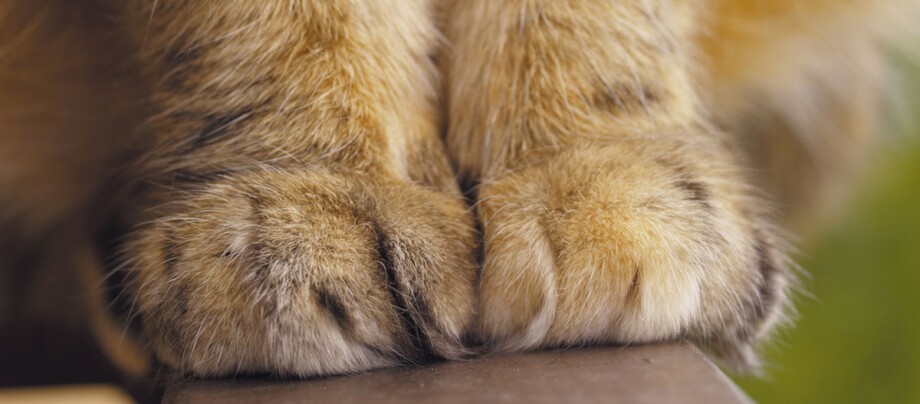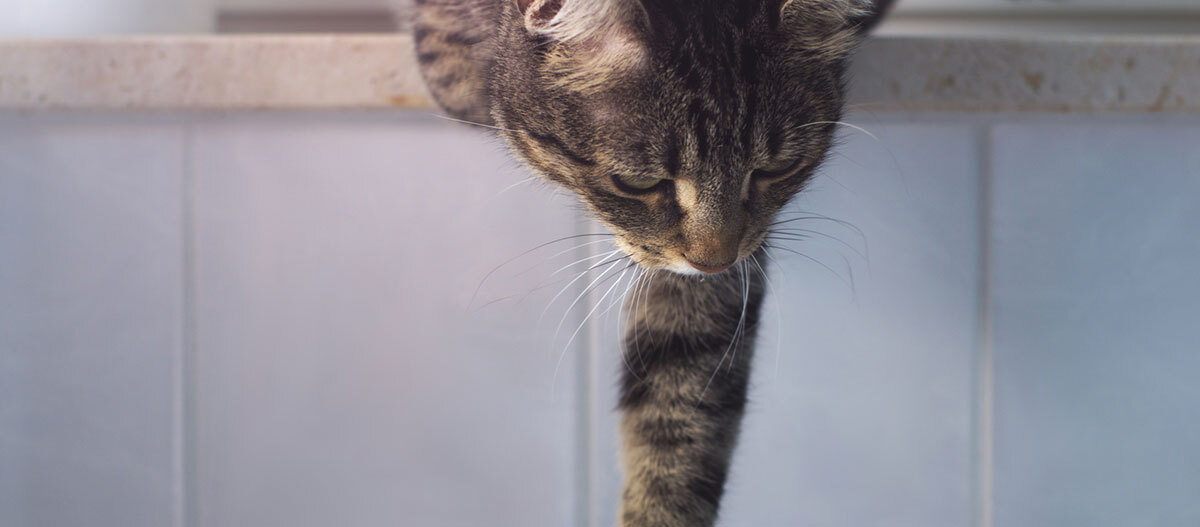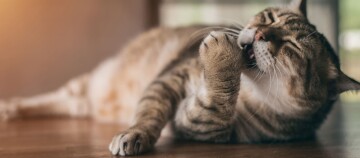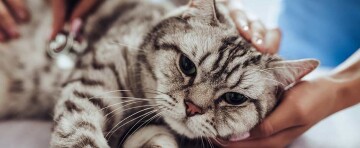Causes of Vertigo in Cats - When Your Cat Keeps Falling Over
17.10.2022 - Reading time: 4 minutes

When a cat casually strolls over the ridge of the roof or skilfully skirts around the smallest obstacle on a tour of cupboards and shelves, it can sometimes take your breath away. The composure and elegance of your feline friend is literally dizzying and leads to some questions: How does it do it? What physical characteristics enable the cat to perform such balancing acts? And why does it do it? What does the cat get out of its acrobatic abilities?
How does the sense of balance work for cats?
As with all mammals, a cat’s sense of balance is located in the ear. What is known as the vestibular apparatus in the inner ear functions as a bubble level. The organ is filled with crystals as sensory cells to perceive stimulus and a fluid as an inert mass, and is used to perceive straight line accelerations. The complex system signals the position of the head in relation to the body and thus controls the corresponding reflexes. The organisation of the balance happens in parallel to the brain activities that control complicated processes like direction or speed of a movement.
Additional physical advantages make it possible for the cat to move with balance: they use their slender tail as a balancing pole to balance out the movement from left to right. The cat’s tail is, however, not quite as flexible as other animals who primarily master climbing. The effortless switch from an ambling pace to quickstep when creeping on the balls of their feet with complete coordination also gives the cat stability.

Why do cats always land on their feet?
The mobility of the cat’s body allows it to turn at lightning speed, even in a free fall on its back, to bring the body into the proper landing position. For this so-called “position reflex”, however, there must be a certain fall distance. When the fall or jump is from a low height, approximately from 2 metres, the cat can be injured from an unfortunate impact. In this case, there is not enough time for the body to realign. When the fall is from a greater height, allowing enough time for the correct rotation, the cat’s body can even sprawl out and act as a kind of parachute.
But beware – from about the height of the fourth floor, a fall can be dangerous even for a house cat. The climbing and balancing abilities have been honed through evolution: because they can quietly climb to great heights they are able to expand the spectrum of prey to include young birds, for example. From a lofty lookout, the cat can get an overview of the immediate vicinity and quickly spot prey, fellow cats or other dangers. Not least, the animal can quickly flee from danger and seek a higher vantage point when a large ground enemy approaches.

What causes vertigo in cats?
If a cat loses its sense of balance, a few causes are possible: physical limitations, age-related loss of movement and organic illnesses. Whatever the reason, don’t wait for the vertigo to disappear on its own. Have the vet clarify what the cause is and how you can find relief for the animal.
How can I help a cat with vertigo?
Like many other animals, cats can hide ailments for a long periods of time. Observe your feline friend closely: frequent tripping and falling are alarm signals. When the animal prefers to stay on the floor, avoids climbing including the scratching tree, and occasionally must be “saved” from greater heights like the top of the cupboard, there could be an issue with their balance. When moving upwards or to high places no longer seems safe to the animal, if the cat has become a ground dweller, then something is not right.
The first route, as mentioned, is to see the vet to clarify any possible organic causes and possibly remedy them. The methods very depending on the trigger. If the cat’s sense of balance is irreparable or is impaired for reasons of age, try to make tools available to your cat. For a house cat, you can build “bridges” to favourite elevated spots and secure dangerous spots, for example by cushioning the area underneath the usual climbing paths. Cats with severe vertigo should never roam outside unmonitored, for reasons of safety. In the home, it is advisable to provide the affected cat with only safe climbing opportunities.



